Old world charm of the Tyrolean Alps - July 25 to Aug 4, 2015
For many years I have been asked why I do not organize a tour the European Alps, where I started mushroom hunting as a kid. Well, mushroom season in Tibet and the Alps overlaps and so I had to drop my Tibet summer tour in order to offer Mushroaming in the Alps.

The Wild Kaiser, with several peaks above 2300 m (7600 ft) seen from the town of Going.
Our main interest will be to experience the beauty and natural diversity of the Northern Alps, but we also will explore the local culture and cuisine. We will meet in Munich, spend a night in the Bavarian capital and also enjoy some of Munich's countless attractions, like Glockenspiel, Viktualien-Markt and the beautiful Botanical garden. From Munich we will travel through gorgeous Upper Bavaria to Tyrol, an hour and half drive from Munich to St. Johann in Tyrol. We will be based in an over 300 year old chalet that is equipped with all the modern necessities. We will cook some of our meals ourselves, especially mushroom meals. For some meals we will visit local restaurants, some in walking distance others we will drive too. From the chalet, we will do our walks into the spruce-fir-beech woods right behind the house or day hikes along the Niederkaiser, part of the world famous (at least in climber circles) Wild Kaiser Range. Local excursions will include a visit to the Alpine Flower Garden in Kitzbühl. Furthermore, we will do full day trips to the Hohe Tauern Mountains with their glaciated peaks well above 10,000ft , and a visit to Salzburg. Participants who do not want to part take in the two more demanding day hikes can enjoy a day of rest. The journey will end in Munich.
|
July 25 to Aug 4, 2015
Land Costs: $3,500 Price for 8 or more participants (with 5 to 7 participants $3800)
includes all accommodation, half board, entrance fees, overland transport.
Single room supplement Munich: $250
Additional costs:
flight to Munich: $800 -$1500
ticket needs to be purchased individually by participant
Other expenses: Souvenirs, alcoholic beverages, hotel bar, phone & laundry, and 7 dinners/lunches marked with * in the itinerary (total cost depending on your orders from $150 to $400)
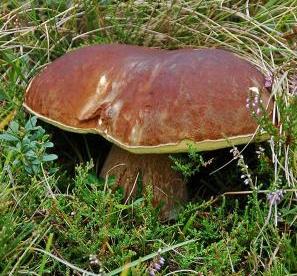 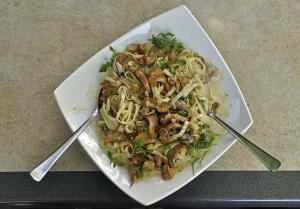 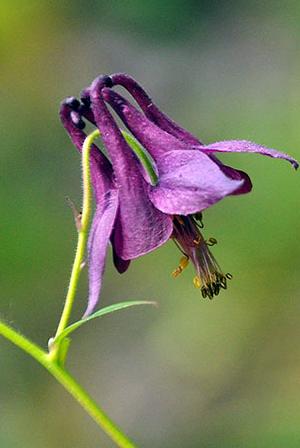 |
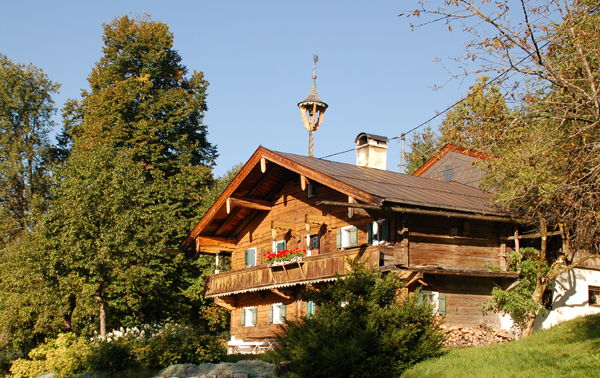 St Johann in Tyrol
Tentative itinerary: July 25 Saturday Munich Please note, that our itinerary is purposely tentative in order to keep flexibility necesary due to unpredictable weather conditions. The timing is traditinally peak king bolete season. Link to my Mushroaming in the Alps mushroom page |
Pictures taken right around the Severnhaus
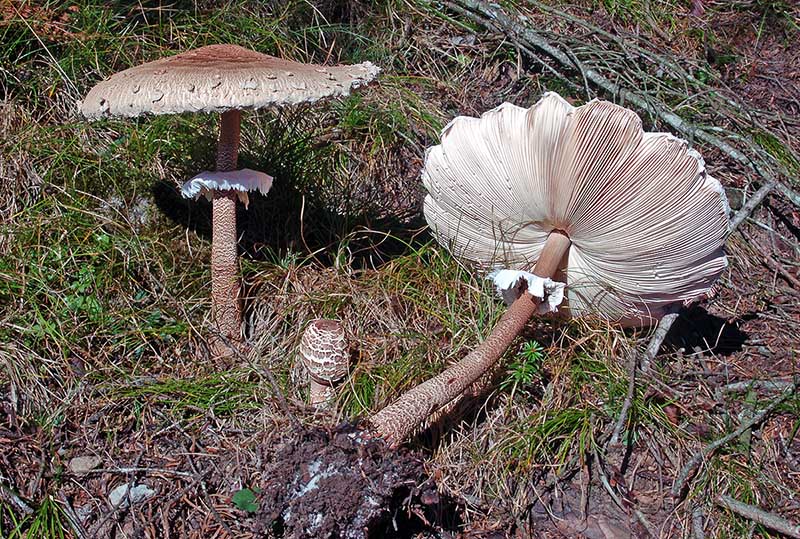
Macrolepiota procera, the Parasol Mushroom can grow to over a foot in height and can be spotted from the car. The snake skin stem is one of its characteristics. It likes forest edges and is one of the best edible mushrooms. Although I started mushroom hunting with my parents as a four-year old, in my early youth I did not care for the taste of Chanterelles and king boletes, but parasols I loved already as a kid.
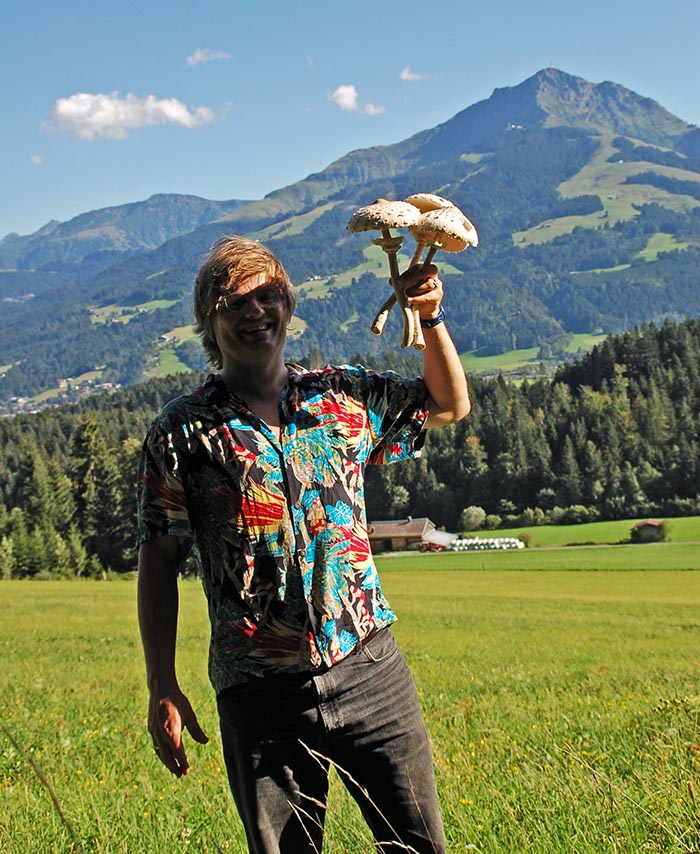
My twin brother Jakob demonstrating how the Parasol got its name. In the back the Kitzbühler Horn.
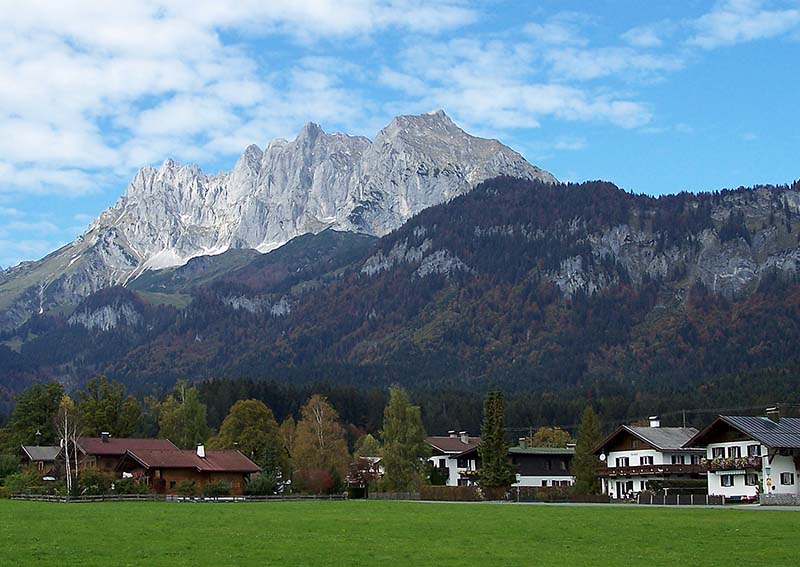
In front is the community of Fricking depicted, in the back on the right the forested Niederkaiser and the imposing Wilder Kaiser.
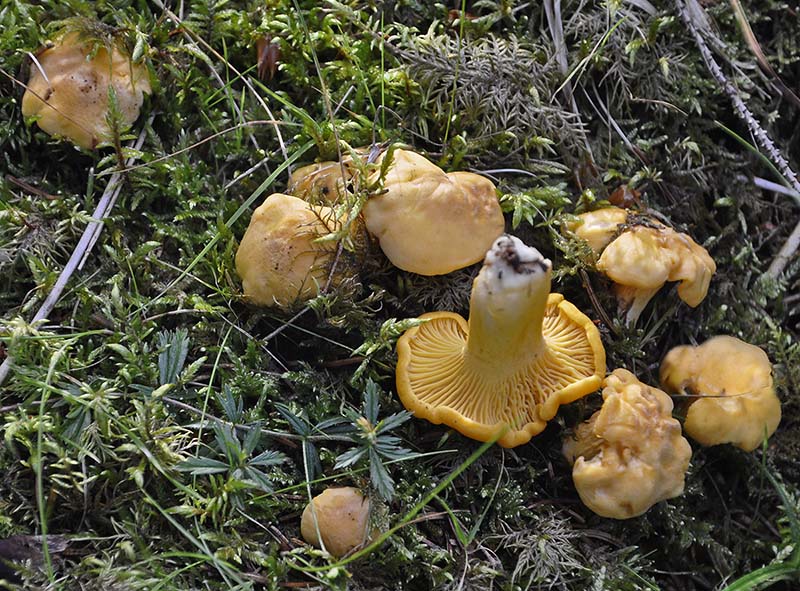
Cantharellus cibarius, the common European chanterelle known in Austria as Eierschwammerl, in Bavaria as Reherl and in Germany as Pfifferling.
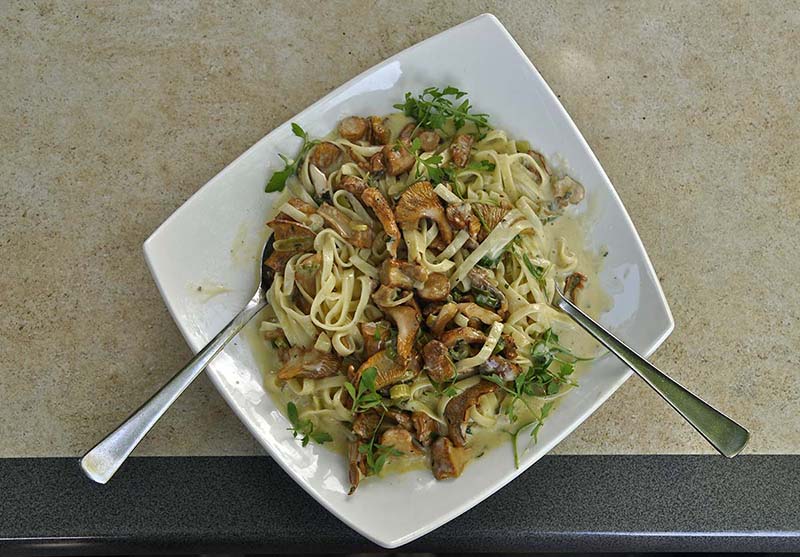
Many restaurants serve wild mushroom dishes during the season. Even if locally there is a shortage of mushrooms in the woods, supply is imported from Southeast Europe, especially Romania as well as Eastern Europe. This awesome meal we got served 10 min walks from the Severnhaus.
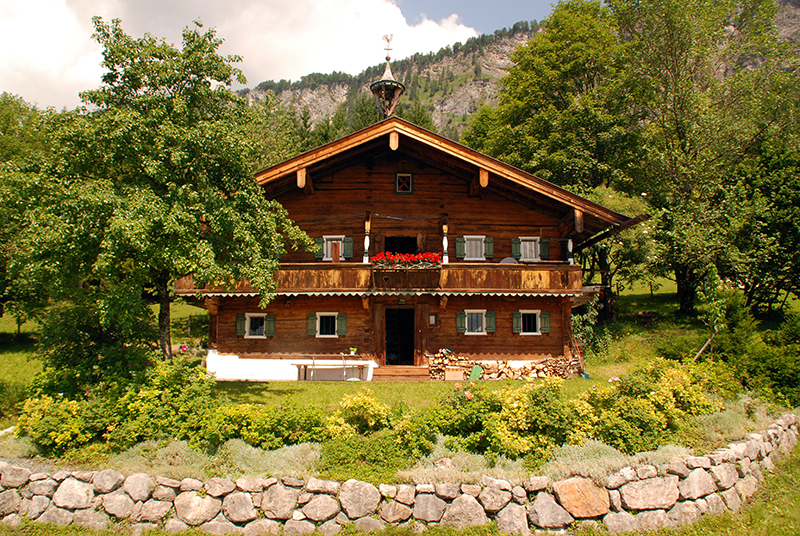 Home base will be the Severnhaus built in 1708 situated on a sunny south facing slope above the market town of St Johann in Tyrol.
Home base will be the Severnhaus built in 1708 situated on a sunny south facing slope above the market town of St Johann in Tyrol.
Link to my Mushroaming in the Alps mushroom page
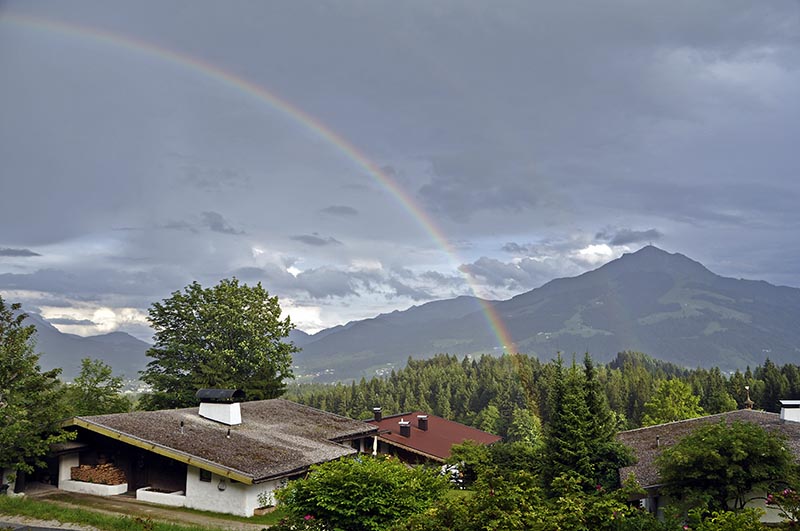
View towards St Johann during a summer thunderstorm.
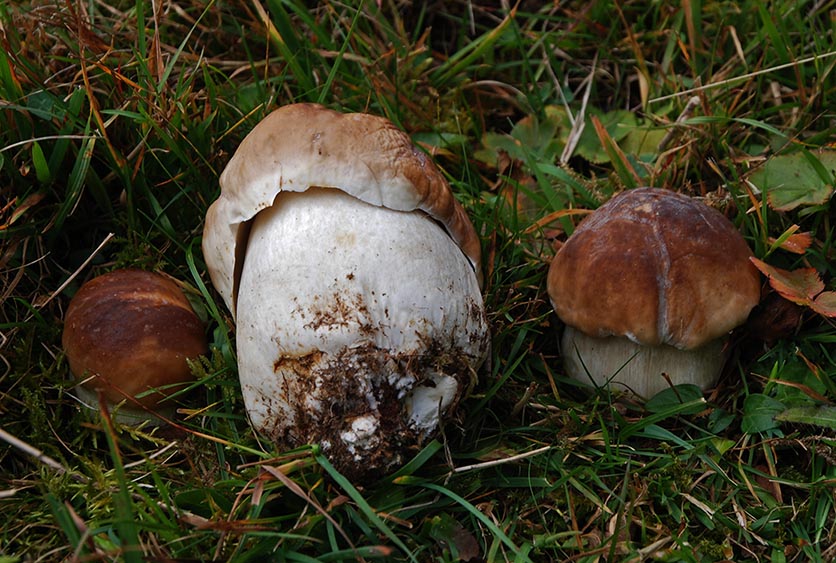 Boletus edulis, locally known as Herrenpilz or more generelly as Steinpilz. A beloved and sought after mushroom that grows with spruce (PIcea abies). Late July, early August is its first prime fruiting season.
Boletus edulis, locally known as Herrenpilz or more generelly as Steinpilz. A beloved and sought after mushroom that grows with spruce (PIcea abies). Late July, early August is its first prime fruiting season.
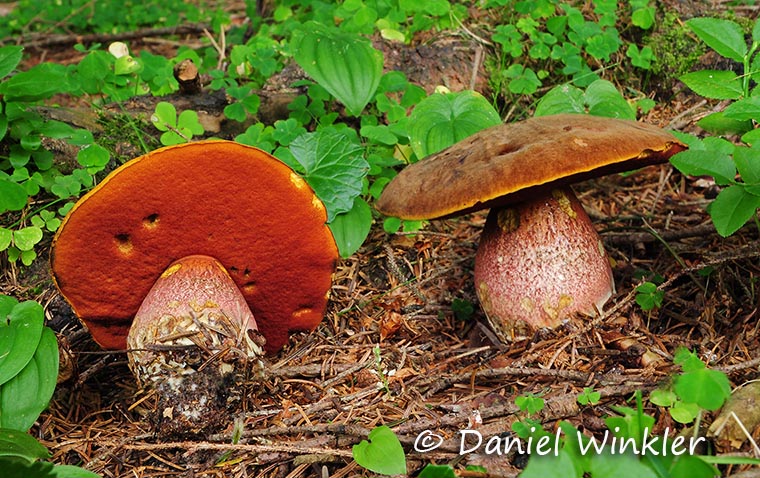 Neoboletus luridiformis (formerly Boletus erythropus), a choice edible bolete known as Schusterpilz in German. It needs to be cooked to render it edible.
Neoboletus luridiformis (formerly Boletus erythropus), a choice edible bolete known as Schusterpilz in German. It needs to be cooked to render it edible.
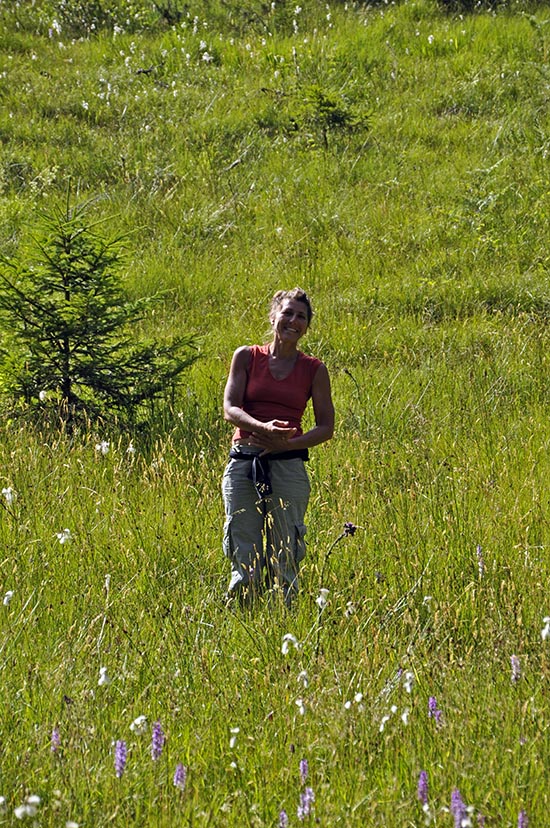
Heidi in wet slope habitat of orchids (Dactylorhiza maculata) and cotton grass (Eriophorum sp.)
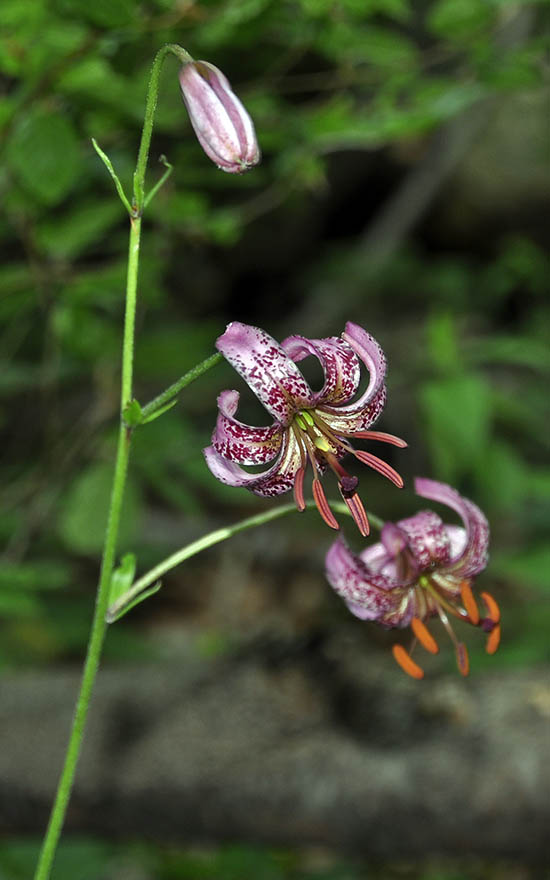
Lilium martagon, a wild Lily.
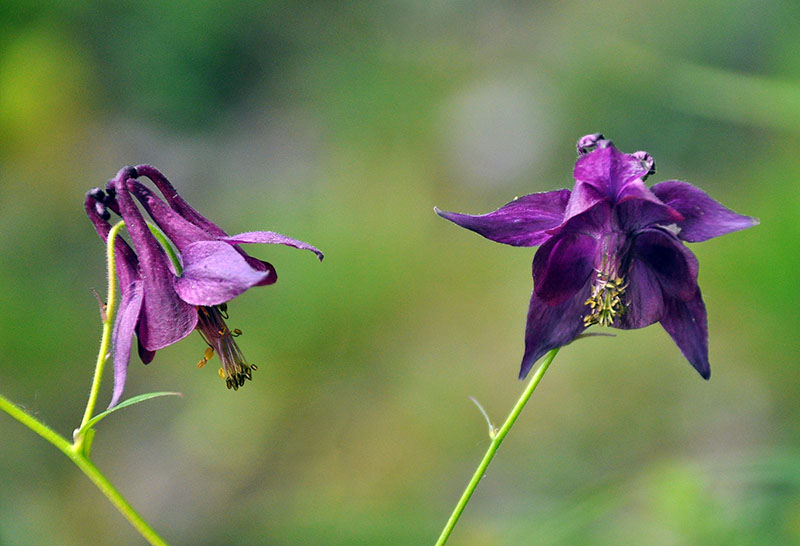
Aquilegia atrata, the dark Columbine
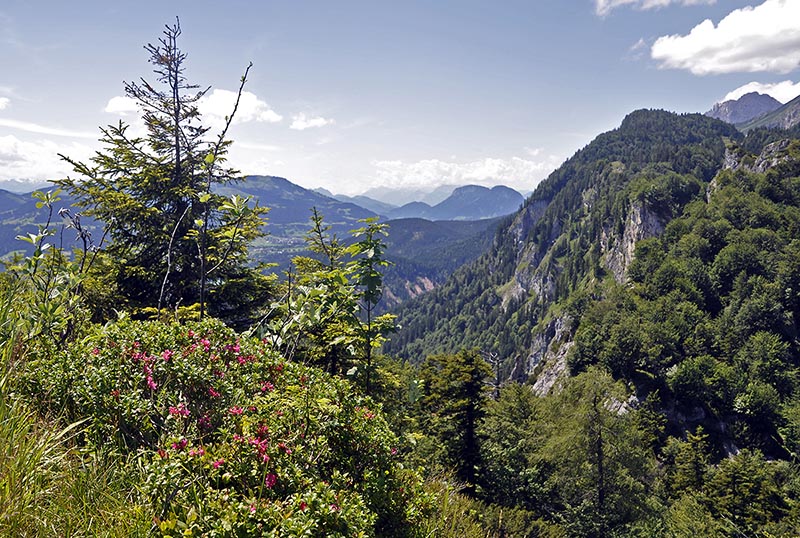
Ridge of Niederkaiser, a favorite hike just behind the house. Alpine vegetation like Alpenrose and scrub mountain pine (Pinus mugo) grows in only 1200 m altitude due to the exposed nature of the site.
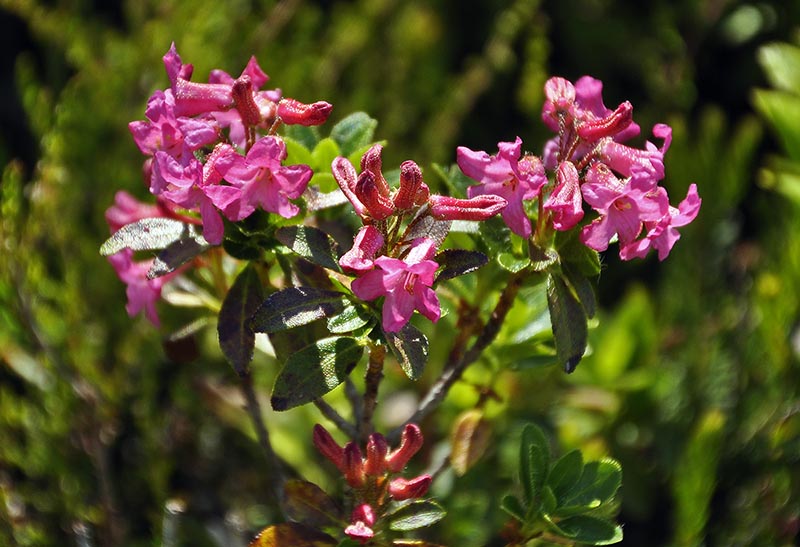
Rhododendron hirsutum, the hairy alpenrose flowering in early July.
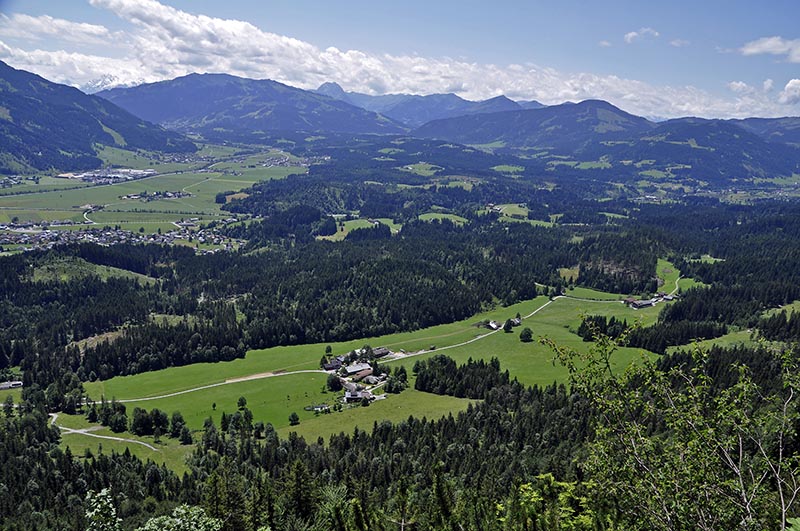
View South from the Niederkaiser towards Oberndorf and Kitzbuhl's Hahnenkamm. In the back the Hohe Tauern.
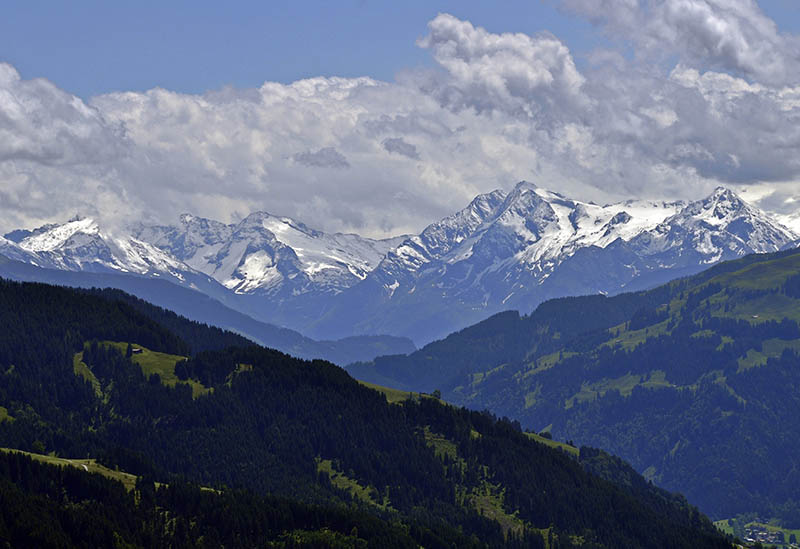
Lower peaks of the Hohe Tauern range that reaches nearly 4000m.
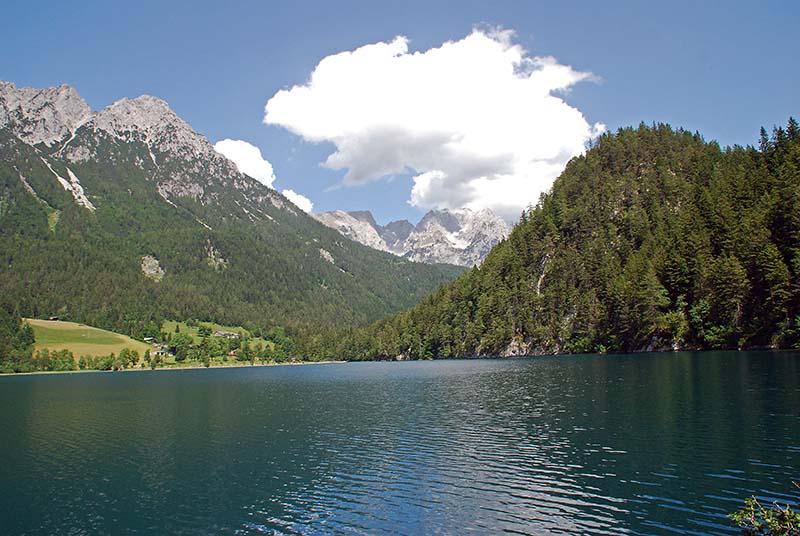
Hintersteiner See, a small lake on the foot of the Wilder Kaiser. There is several natural lakes in the vicinity of St Johann with great views of the Wild Kaiser, some of , some of them bog lakes, one in the midst of a forest.
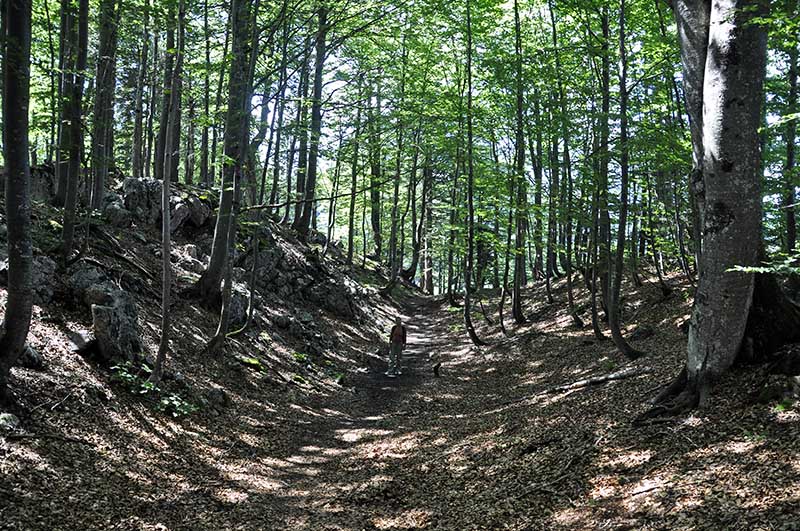
Beech forest (Fagus sylvatica) along a hiking trail.
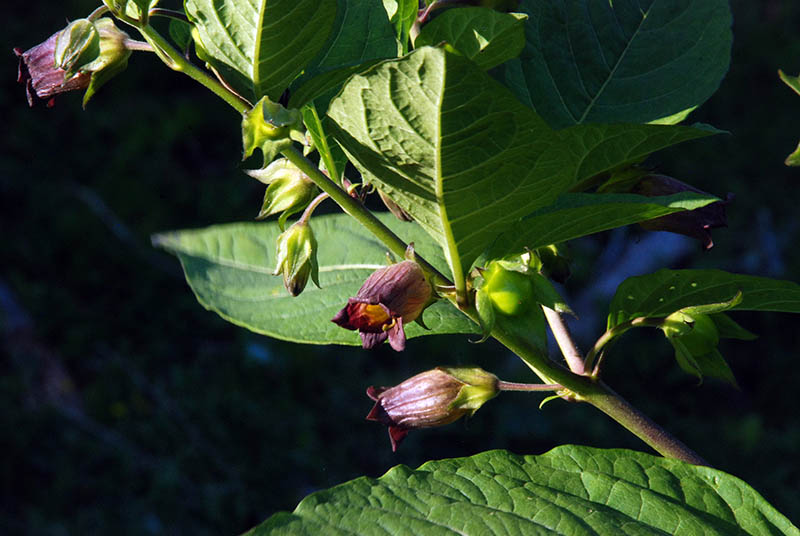
Atropa belladonna, Belladonna or Deadly Nightshade is a common successional plant in the early stages after logging. As a member of the Solanaceae it is rich in tropane alkaloids and a colorful lore is spun around this witch herb.
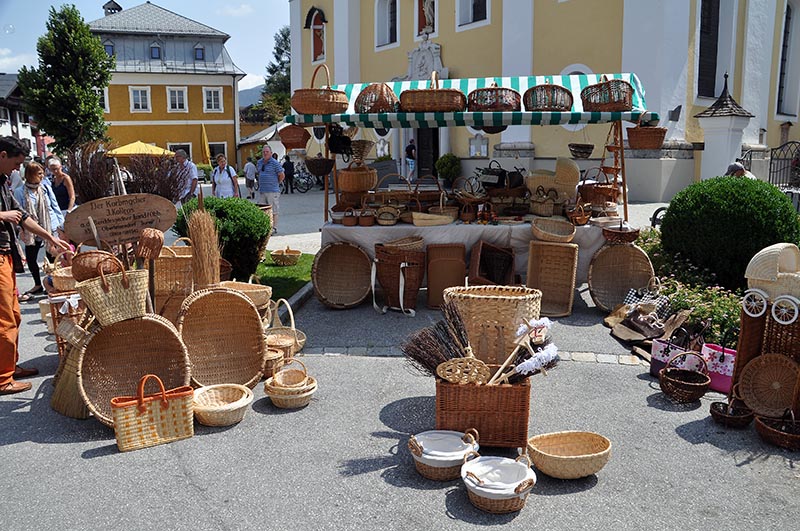
A local basket maker keeping an ancient craft alive. Seen on the Friday market in St Johann in Tyrol.
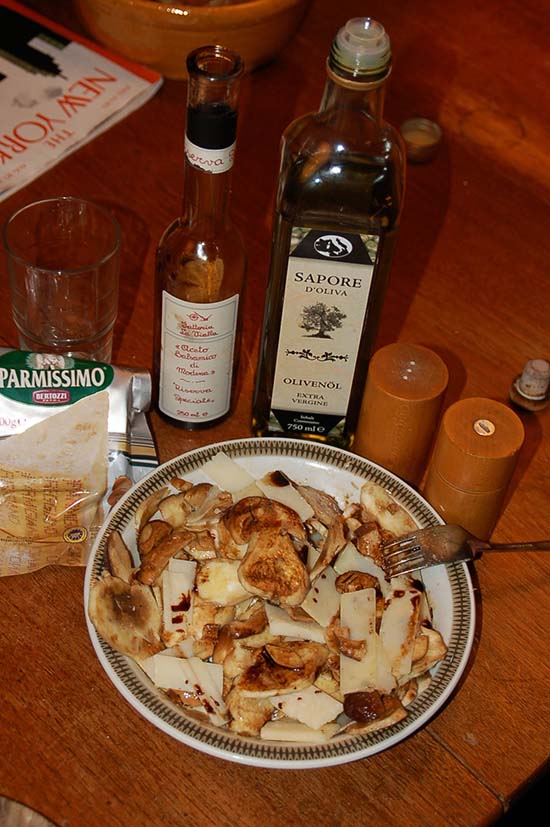
Raw porcini make an excellent salad. We prefer eating the best King boletes sliced with a bit of olive oil, balsamico and parmiggiano.
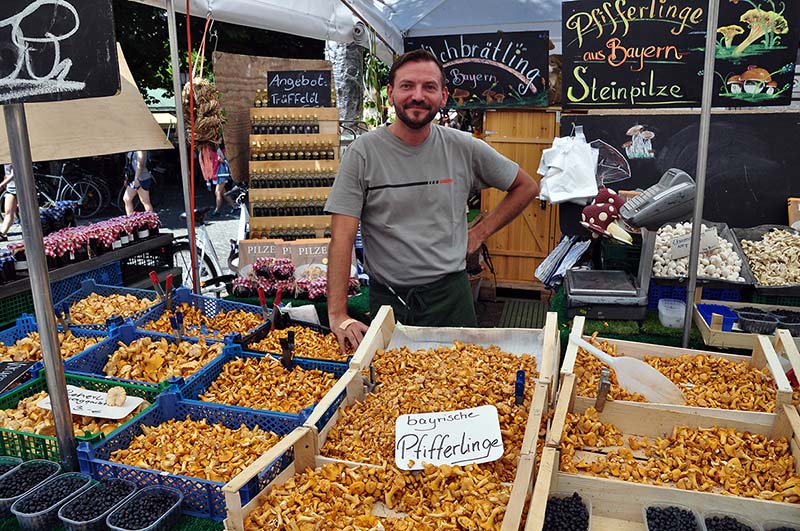
Chanterelles (Cantharellus cibarius) for sale at the Viktualienmarkt, Munich's best fresh produce market in the center of town. "Pfifferlinge" are for sale in many regular supermarkets from June onwards.
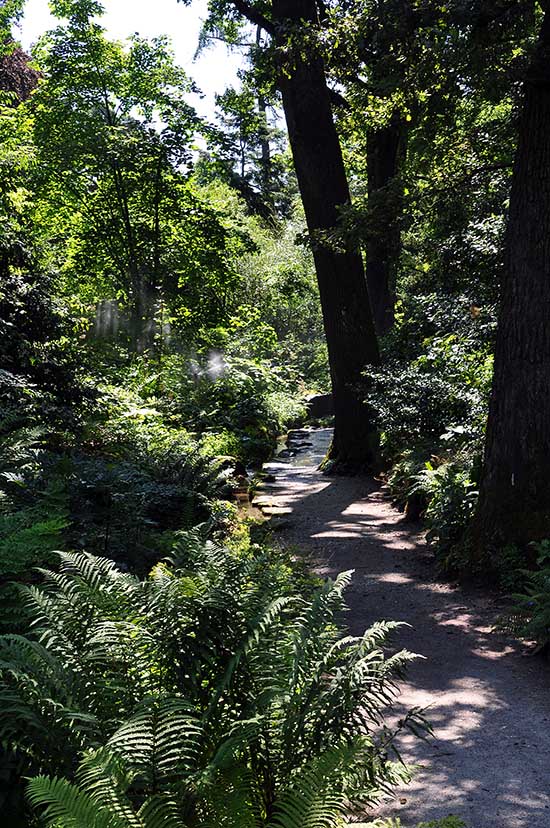
"Fern Valley" in the Botanical Garden in Munich Nymphenburg.
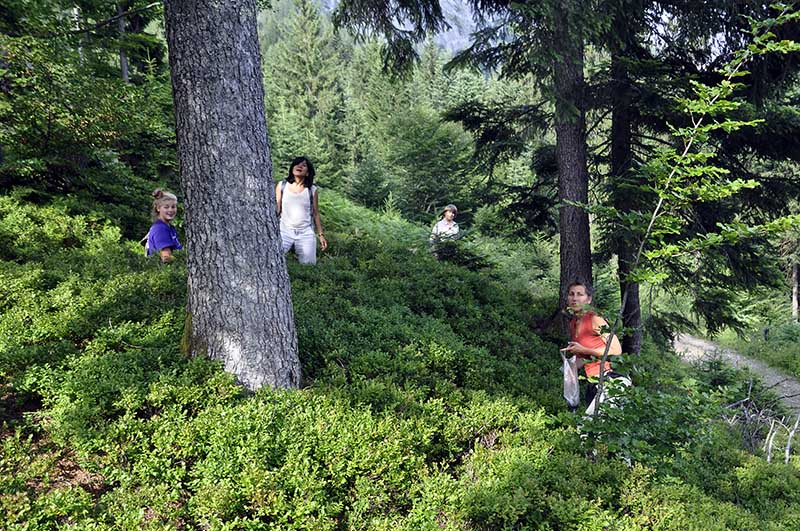
Summer is blue berry season (Vaccinium myrtillus) in the Alps. This blueberry is smaller than your typical North American store-bought blueberry, but much richer in aroma.
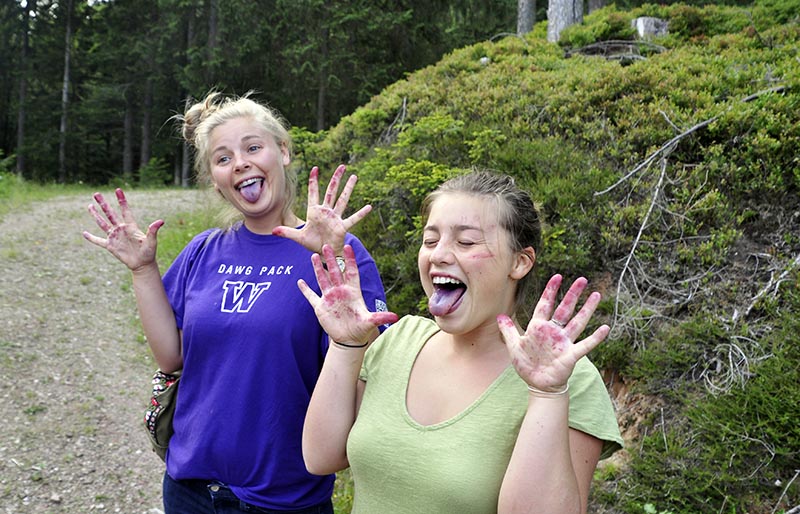
Blueberries do leave their traces.....
Link to my Mushroaming in the Alps mushroom page
Mushroaming Tyrolean Alps 2015
First created 11-11-2014
